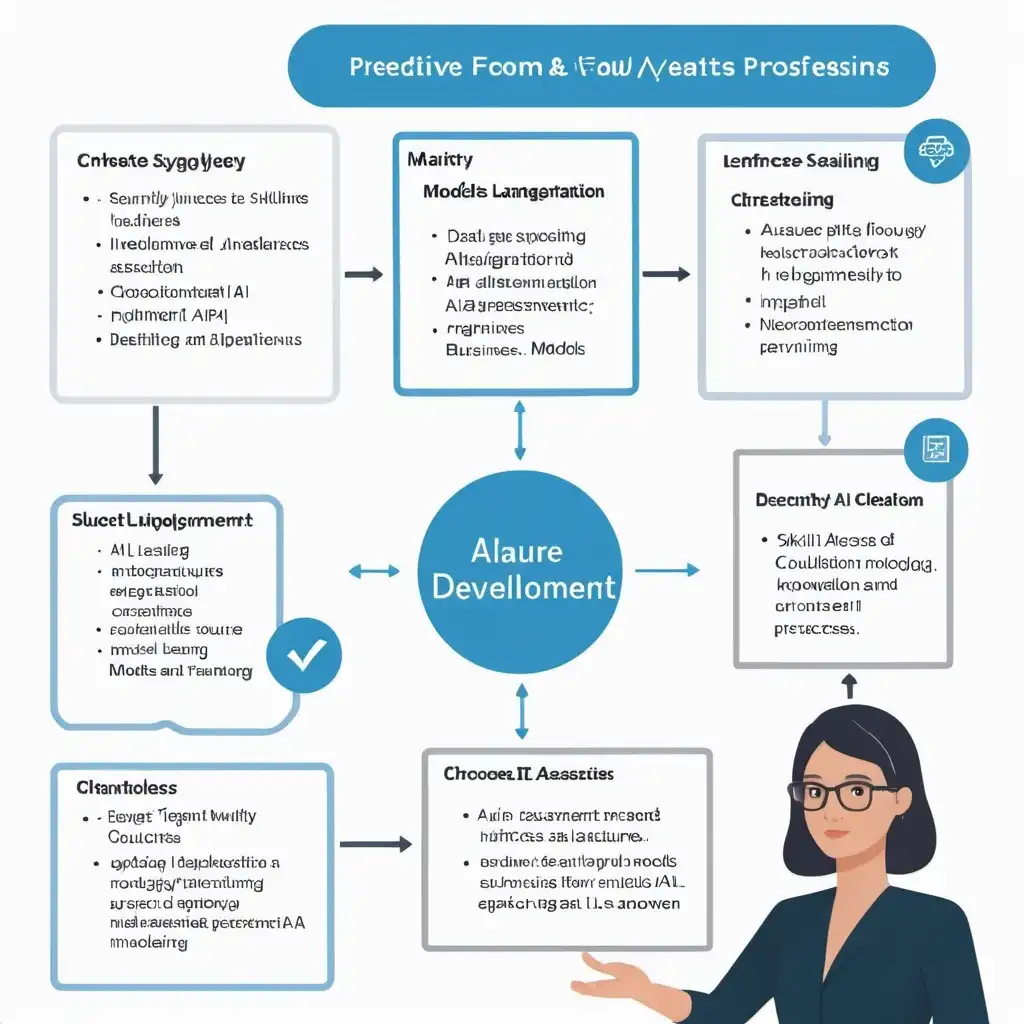图片提示词prompt
Create a visual flowchart for a customer to become AI-ready
1. Assessment
Business Needs Evaluation: Identify specific business challenges and goals.
AI Readiness Assessment: Evaluate current technological infrastructure and data maturity.
Gap Analysis: Identify gaps in skills, technology, and data quality.
2. Data Preparation
Data Collection: Gather relevant data from various sources.
Data Cleaning: Remove inconsistencies, duplicates, and irrelevant data.
Data Labeling: Ensure data is accurately labeled for training AI models.
Data Governance: Implement policies for data management, security, and privacy.
3. Technology Stack Selection
Infrastructure Setup: Choose between on-premises, cloud, or hybrid solutions.
AI Tools and Platforms: Select appropriate AI and machine learning platforms (e.g., Azure AI, TensorFlow).
Integration with Existing Systems: Ensure compatibility and integration with current IT systems.
4. Skill Development
Training Programs: Offer AI and machine learning training for staff.
Hiring Experts: Recruit AI specialists if needed.
Collaboration: Partner with AI vendors or consultants for knowledge transfer.
5. AI Model Development
Model Selection: Choose the right AI models for your needs (e.g., predictive analytics, natural language processing).
Model Training: Train models using prepared data.
6. Deployment and Scaling
Pilot Projects: Start with pilot AI projects to assess impact.
Deployment: Implement AI models in production environments.
Monitoring and Optimization: Continuously monitor AI performance and optimize models.
Scaling: Expand AI deployment across other areas of the business.
Arrows and Flow: Use arrows to guide the user from one step to the next, ensuring the process is easy to follow.
Clarity: Ensure that each stage and sub-step is clearly labeled and not cluttered with too much information.
为客户创建可视化流程图,使其为人工智能做好准备









